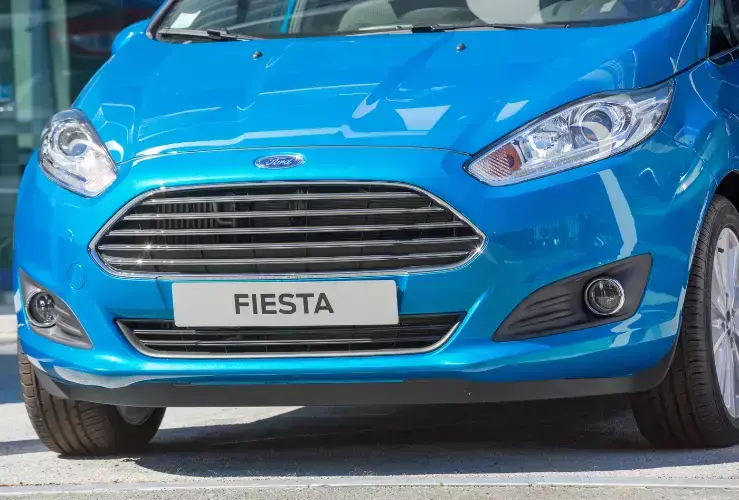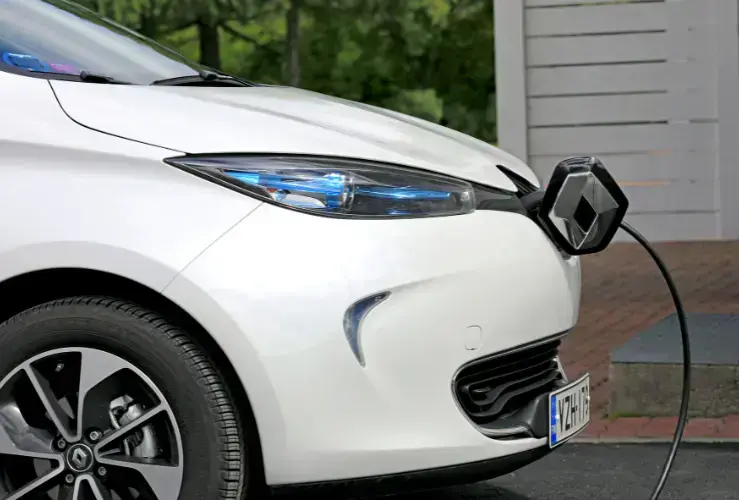As the name suggests, a car-derived van is a vehicle whose design has been derived from a pre-existing car.
A car-derived van, or CDV, has the characteristics of a car, but with more space for carrying items.
In most cases, the rear seats have been replaced with a load area, and the rear side windows have been boarded up or, more likely, replaced with panels.

Credit: Goodpics - stock.adobe.com
Cars to vans: Who might use a car-derived van?
A CDV might be used by someone who needs to carry heavier loads on a regular basis - either for personal or business reasons.
A car-derived van is a cost effective way to get some of the benefits of a “proper” van, without the high cost.
What are the loading capacities of car-derived vans?
Loading capacity for a CDV is generally rather limited. For example, a Vauxhall Corsavan (derived from the Corsa) has 571kg of capacity, while a Ford Fiesta van (derived from a Fiesta) has 508kg of capacity.
Both vans have under a cubic metre of volume.
These loads compare to the Vauxhall Combo 2300 which can carry 1,000 kg and 3.3 cubic metres, and the Ford Transit, which offers 2,457 kg of capacity and 15.1 cubic metres of space.
Clearly, those who need to carry larger, heavier items, would opt for a genuine van, rather than a car-to-van conversion design.
How does the government classify CDVs?
Car-derived vans are classified by the UK government as those whose design is based on an existing car, and crucially, whose weight does not exceed 2,000kg/2 tonnes.
To be exact, the 1984 Road Traffic Regulations Act – states a ‘car-derived van’ means ‘a goods vehicle that is adapted as a derivative of a passenger vehicle and which has a maximum laden weight not exceeding 2 tonnes.’
As the gov.uk document on the subject points out, very few vehicles meet the CDV criteria, and are usually the “Ford Fiesta van, Vauxhall Corsa or Renault Clio van.”
Such a vehicle will be the same size as a car, and have no rear seats or seat belt mountings.
CDVs will be specified as such “under ‘body type’ on the vehicle’s registration document (V5C).”
Is there a list of vehicles qualifying as CDVs?
The most recent list of CDVs is available to view on the gov.uk website, but it has not been updated since 2015.
Given that many models on the list have gone out of production and several new models have been launched, the list is of very limited use.
The government states it is working with the Society of Motoring Manufacturers and Traders (SMMT) to publish a new list.
What about car-derived van speed limits?
CDVs are subject to the same speed limits as goods vehicles with a maximum laden weight of 7.5 tonnes.
This translates to 50mph on single carriageways, 60mph on dual carriageways, and 70mph on motorways.
If a CDV has been incorrectly registered, it must adhere to the above car derived speed limits until the relevant documents have been updated.
What is a dual-purpose vehicle?
A dual-purpose vehicle is similar to a CDV.
A dual-purpose vehicle will have been adapted for both passenger and cargo use, with a maximum unladen weight of 2,040kg.
Do car-derived vans feel like a car or a van to drive?
Up front, most CDVs retain the interior of the cars on which they’re based.
They usually offer the same equipment and comfort, plus they’re as easy to drive as the car versions - which is to say, a lot easier to drive than a “proper” van.

Source: chrisdorney - stock.adobe.com
Does ‘van tax’ apply to CDVs?
Yes, the flat van tax rate applies to CDVs of all kinds, whether petrol or diesel. For 2022/23, this is £290 per year (12-month rate). Van tax is not linked to CO2 emissions, unlike passenger vehicles. Some ‘low/zero emissions’ vans may, however, be exempt.
There is no tax advantage to owning a CDV compared to a regular van - since they are taxed the same.
What is the best car-derived van to buy?
Got your heart set on a new car-derived van?
If so, you don’t have many options for a CDV.
The Ford Fiesta Van, the Renault Zoe Van and the Dacia Duster Commercial are your main choices for a car-derived van.
Of these, the Renault Zoe is the only electric powered van, while the Ford Fiesta Van has a regular combustion engine, as does the Duster Commercial.
At least deciding which is the best car-derived van for your needs should be easy.
Cheapest CDV?
At present, the Duster Commercial Van costs from £12,795 before VAT (and is actually based on a passenger SUV), while the mid-range option is the Ford Fiesta Van, starting at £16,715 excluding VAT for the Trend specification.
The all-electric Renault Zoe Techno starts at £29,995.
Ford Fiesta van: More information
Comfortable and easy to drive, the Ford Fiesta Van comes well reviewed by the UK’s motoring press.
Considered better in terms of ride comfort and handling than the now-defunct Corsavan (last produced in 2018), it’s a great all-rounder.
Only the Turbocharged Sport variant is available at present, but there’s a wider choice on the used market - including diesel options.

Source: Taina Sohlman - stock.adobe.com
Renault Zoe Van: More information
The Renault Zoe is one of the UK’s best-selling electric cars, and has been superbly adapted as a van.
It offers load capacity comparable to the Ford Fiesta Van, but the running costs are considerably lower because it’s all-electric.
Those with ‘range anxiety’ need not worry either, since the Zoe Van boasts 245 miles of range - which is even more impressive when you consider the standard Tesla Model 3 has a range of 220 miles.
Renault offers some attractive leasing options too, and the vehicle will lend your business a degree of “eco kudos”, thanks to its zero-emission status.

Credit: doganmesut - stock.adobe.com
Dacia Duster Commercial
Because it has an unladen weight of under 2,000kg, the Duster Commercial is categorised as a car-derived van - rather than a commercial 4×4.
The Commercial has more space than a Ford Fiesta Van, but a lower maximum load weight.
It also features some off-road capabilities, although this might only be of benefit to a minority of owners.
The low cost is probably the biggest benefit, while there are some quality issues, according to some reviews.
Is the Citroen Berlingo a car-derived van?
While some older versions of the Berlingo are categorised as CDVs, the most recent models are not.
MPV and “real” Berlingo van versions are on the market, but there are no CDVs.
Similarly, ‘is the Volkswagen Caddy a car-derived van?’ and ‘Is the Ford Transit Courier a car-derived van?’ - are both common questions, to which the answer is no, they are not classified as car derived vans.
CDVs: Benefits of buying a second hand car-derived van
Looking at the prices of car derived vans, you may be put off by the fact that the cost of a “real” van isn’t much higher. For this reason, you may consider buying a used CDV.
And buying second hand also gives you more choice: you’ll be able to find Renault Clio Van and the Mini Clubvan, among others.
Leasing a car-derived van
You might also consider leasing a car-derived van.
This would mean a lower initial outlay in order to drive off with a CDV, lower repair bills, not having to worry about selling it in the future, and being able to get an all-new van every couple of years.




